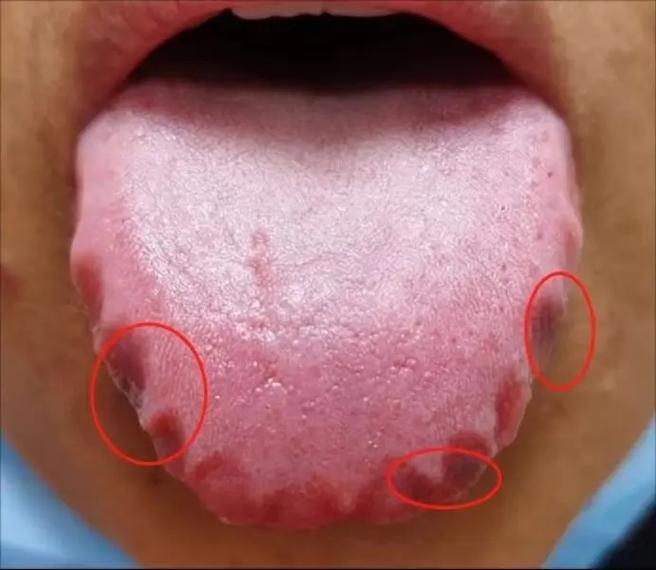
You’re in the bathroom, going through your morning routine, when you stick out your tongue and notice something new. The edges aren’t smooth anymore. Instead, they’re scalloped, with a series of slight indentations, as if your teeth have been pressing into the sides while you weren’t looking. It’s a curious sight, and one that might make you wonder if it’s something to be concerned about.
This condition even has a name: lingual indentations or a “scalloped tongue.” And while it might seem like a strange quirk, your body isn’t just making patterns for fun. Those teeth marks on the sides of your tongue are your body’s way of sending a clear message: “We are taking up too much space, and there’s underlying pressure that needs to be addressed.”
Think of your tongue not just as a muscle for taste and speech, but as a piece of a precise anatomical puzzle. It’s designed to rest comfortably against the roof of your mouth, with just enough room on the sides to clear your teeth. When it consistently presses against them, leaving marks, it’s a sign that the balance is off.
Decoding the Message: The Three Most Common Causes
- The “We’re Swollen” Report (The Most Common Cause): This is often a sign of systemic fluid retention or inflammation. Your tongue is a muscle, and when your body holds onto extra fluid, it swells. A swollen tongue has nowhere to go but outward, pressing against the hard barrier of your teeth. This could be related to:
- Dehydration: It sounds counterintuitive, but when you’re dehydrated, your body goes into conservation mode and holds onto every drop of fluid it can, leading to swelling (edema).
- Allergies: Seasonal or food allergies can cause mild but persistent inflammation throughout your body, including your tongue.
- Nutrient Deficiencies: Particularly a deficiency in B vitamins or iron.
- Thyroid Issues: An underactive thyroid (hypothyroidism) is a classic culprit for causing general puffiness and a swollen tongue that shows teeth marks.
- The “We’re Stressed” Clench: This is a mechanical issue driven by stress and anxiety. When you’re under constant, low-grade stress—the kind that has you grinding your teeth at night (bruxism) or subconsciously clenching your jaw during the day—your jaw muscles are in a state of tension. This can push your jawbone tighter together, leaving less room for your tongue. The tongue gets pressed between your teeth, resulting in those tell-tale scalloped edges.
- The “We Don’t Fit” Design: Sometimes, the issue is purely structural. If you have a larger tongue (macroglossia) or your dental arch is particularly narrow, your tongue simply doesn’t have the room it needs. This can be a lifelong trait or something that becomes more noticeable with age or weight gain.
What Your Body Is Asking You to Do
Seeing these marks is a reason for curiosity, not alarm. It’s a prompt to take a closer look at your overall well-being.
- Start with the Simplest Fix: Increase your water intake. Aim for half your body weight in ounces of water per day (e.g., a 160-pound person should aim for 80 ounces) and see if the puffiness subsides after a week.
- Audit Your Stress: Are you waking up with a sore jaw? Do you find yourself clenching your teeth during a stressful work call? Practicing stress-reduction techniques like mindful breathing or gentle yoga can relax the jaw muscles and create more space.
- Look at Your Diet: Could you be eating something you’re mildly allergic to? Dairy and gluten are common triggers for inflammation. Try an elimination diet or focus on anti-inflammatory foods like leafy greens and berries.
- Mention It to Your Doctor or Dentist: This is a valuable, visible clue for a healthcare professional. Tell them you’ve noticed lingual indentations. They can check for signs of teeth grinding, evaluate your thyroid function with a simple blood test, and help you pinpoint the exact cause.
Those teeth marks on the sides of your tongue are a gentle, physical memo from your body. They are a sign that something—be it inflammation, stress, or your anatomy—is creating just a little too much pressure from within. By listening to this message, you can take simple steps to reduce the pressure, ease the swelling, and help your tongue rest easy once again.